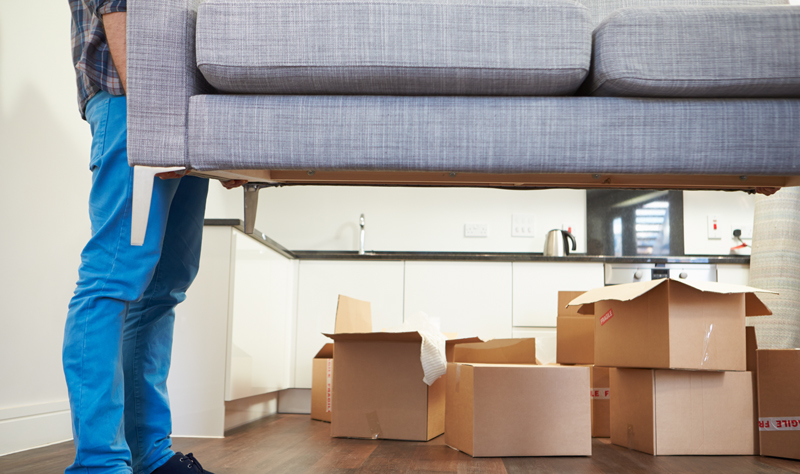Opting not to enlist the help of a moving company? Most of the time, moving on your own can save you some cash—but for the uneducated, a DIY move can be rife with unexpected costs. Avoid surprise expenses, and make the most of relocating on your own, with our guide to surviving and succeeding at a DIY move.

Get out your calculator
To save on a moving your home, you need to calculate all of the costs up front. People often think a do-it-yourself move is cheaper, but they forget all that’s involved, from truck rental and extra packing or loading help, to traveling costs like gas, tolls, hotels, and meals. Add to that boxes, tape, and other packing supplies and it can really add up. Some money can be saved by using recycled boxes and employing friends to help, but you may have to triple-tape those boxes to make them sturdy enough or cover medical bills if one of your friends injures himself humping your mega TV down the hall steps. Make a complete budget, listing every potential move expense. Plan for some extra expenses, like hiring a last-minute professional to help you actually load the truck safely, or for a big takeout meal for all of your helpers.
Get out your day planner
You may be a free spirit who likes to “go with the flow,” but moving requires extensive advance planning, from checking with the IRS on whether your expenses are deductible, and ordering a truck or moving supplies, to turning off utilities, to getting your mail and magazines re-routed. It’s not a job for the disorganized or faint of heart! Plan your move at least four months in advance and map out what needs to be done every week, whether it’s planning a yard sale so you have less to pack or getting your dog’s medical records so Fluffy is ready for the trip. The true secret to a successful DIY move is making sure you give yourself enough time.
Take inventory, and pack slowly
Walk through your house and make an inventory of what’s going to your new home and what can be sold or given away. Based on your inventory list, estimate packing supplies and order them several weeks in advance. As soon as you can, start packing those things that you rarely use, like seasonal items. Put as much as possible into boxes, which provides extra protection for your items, and place electronics back into their original packaging, if possible. Mark each box as you go, by room and contents, and don’t overload the boxes. Since you’ll be the one moving them, you’ll want them to be relatively light. Soft items—sofa cushions, pillows, stuffed animal collections—can be packed in plastic bags and used as bumpers between hard items, such as dressers and tables. Leave clothing in dresser drawers and wrap the chests (and all furnishings) with protective bubble wrap or blankets that are tightly taped.
Load smart–and safely
To spare your back and prevent accidents, make sure your truck has a ramp, and that you have a dolly to roll big items between home and truck. Cover the floor of the truck with cardboard or plastic to keep your items as clean as possible. Before you begin loading, it’s helpful to draw a scale interior of your truck and estimate how your belongings will best fit. Create an actual loading order, so that heavier items like appliances and couches go in the back, lighter items are in the middle, and other heavy items can be added at the end to help hold everything in place. The more you can pad, the better. And the tighter you can make the load, the less items will shift and become damaged. Loading a truck is like a puzzle; it may take you several tries to get it right, so give yourself a day or two to do the job right. Always remember to use your legs to lift heavier items, ask for help, and have a spotter for really big items!
Adapted from Better Homes and Gardens. Used with permission. ©Meredith Corporation. http://www.meredith.com. All rights reserved.


